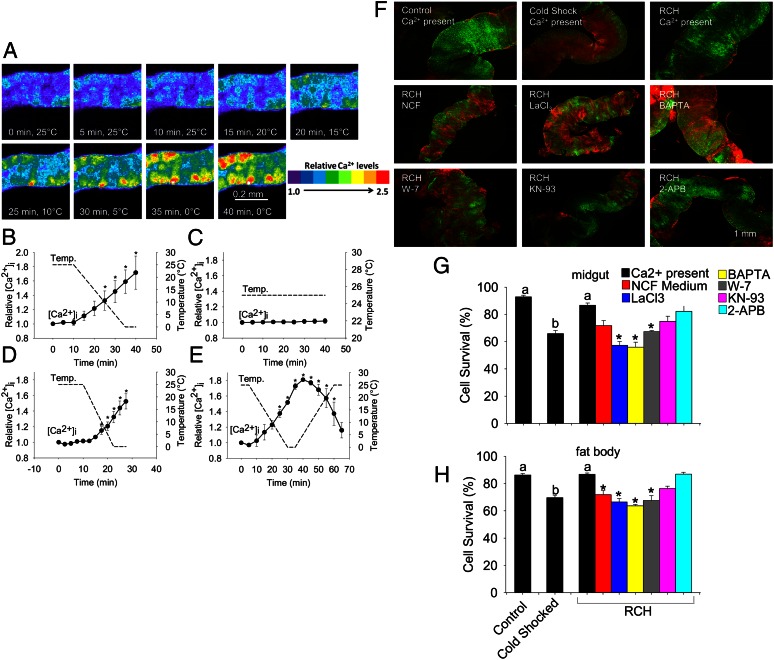Fig. 3.
Calcium signaling also mediates cold sensing and rapid cold hardening in a freeze-intolerant fly, S. bullata. Intracellular calcium concentration in salivary glands in response to (A and B) chilling at 1 °C/min, (C) control conditions of 25 °C, (D) chilling at 2 °C/min, and (E) chilling at 1 °C/min followed by warming at 1 °C/min. (F) Fluorescent cell viability images of midgut tissue incubated with the indicated drug at the following temperature conditions: Control: 25 °C/4 h; Cold Shock: −14 °C/2 h; RCH: 0 °C/2 h, −14 °C/2 h. Green nuclei represent live cells and red nuclei represent dead cells. (G and H) Quantified viability results for (G) midgut and (H) fat body tissue. Values are mean ± SEM, n = 3 for (B–D), n = 2 for (E), n = 4 for (G and H). In A, relative calcium concentration of a representative segment of salivary gland tissue is indicated by the provided color scale. In B–E, an asterisk indicates a significant difference between a particular time point and the initial calcium concentration (repeated measures ANOVA, post hoc Bonferroni, P < 0.05). In G and H, an asterisk indicates a significant reduction in survival in the RCH group relative to tissues incubated with calcium present (ANOVA, Tukey, P < 0.05). NCF, nominally calcium free medium. LaCl3 is a general calcium channel blocker, BAPTA is an intracellular calcium chelator, W-7 is an antagonist of the calcium binding protein calmodulin, and KN-93 inhibits activation of CaMKII whereas 2-APB is an inhibitor of IP3-mediated calcium signaling.

